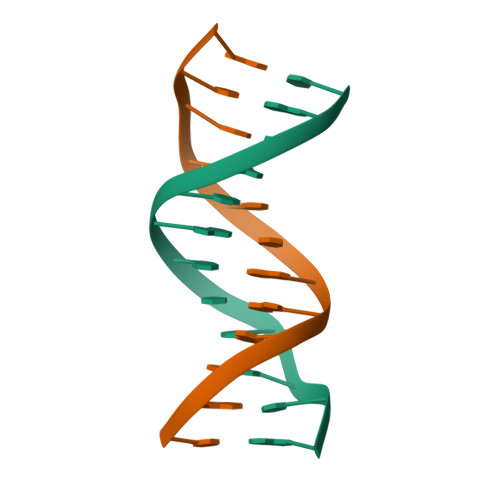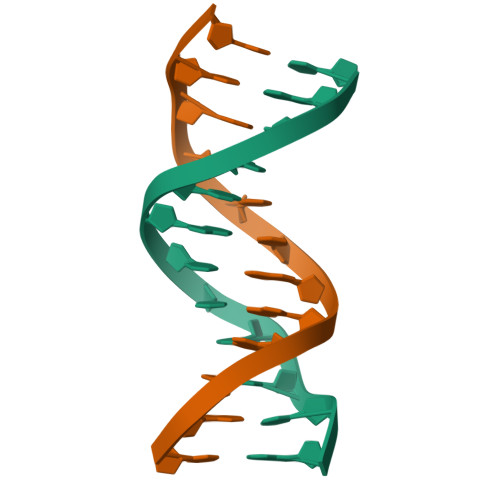Structure of a B-DNA dodecamer: conformation and dynamics.
Drew, H.R., Wing, R.M., Takano, T., Broka, C., Tanaka, S., Itakura, K., Dickerson, R.E.(1981) Proc Natl Acad Sci U S A 78: 2179-2183
- PubMed: 6941276
- DOI: https://doi.org/10.1073/pnas.78.4.2179
- Primary Citation of Related Structures:
1BNA - PubMed Abstract:
The crystal structure of the synthetic DNA dodecamer d(CpGpCpGpApApTpTpCpGpCpG) has been refined to a residual error of R = 17.8% at 1.9-A resolution (two-sigma data). The molecule forms slightly more than one complete turn of right-handed double-stranded B helix. The two ends of the helix overlap and interlock minor grooves with neighboring molecules up and down a 2(1) screw axis, producing a 19 degrees bend in helix axis over the 11-base-pair steps of the dodecamer. In the center of the molecule, where perturbation is least, the helix has a mean rotation of 36.9 degrees per step, or 9.8 base pairs per turn. The mean propeller twist (total dihedral angle between base planes) between A . T base pairs in the center of the molecule is 17.3 degrees, and that between C . G pairs on the two ends averages 11.5 degrees. Individual deoxyribose ring conformations as measured by the C5'-C4'-C3'-O3' torsion angle delta, exhibit an approximately Gaussian distribution centered around the C1'-exo position with delta avg = 123 degrees and a range of 79 degrees to 157 degrees. Purine sugars cluster at high delta values, and pyrimidine sugars cluster at lower delta. A tendency toward 2-fold symmetry in sugar conformation about the center of the molecule is detectable in spite of the destruction of ideal 2-fold symmetry by the molecular bending. More strikingly, sugar conformations of paired based appear to follow a "principle of anticorrelation," with delta values lying approximately the same distance to either side of the center value, delta = 123 degrees. This same anticorrelation is also observed in other DNA and DNA . RNA structures.
















